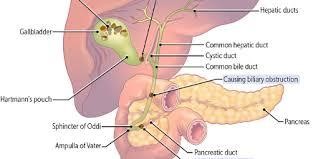The nurse is providing care for a client with an absolute neutrophil count (ANC) of 400. Which action should the nurse perform prior to delivering the meal tray to the client's room?
Reference Range
Neutrophils (ANC) [Reference Range: 2500 to 8000 mm3 or 2500 to 8000 cells/uL]
Cut the spaghetti and meatballs into small pieces.
Exchange the pasteurized whole milk with skim milk.
Substitute the fried potatoes with a garden salad.
Remove the fresh grapes from the meal tray.
The Correct Answer is D
Choice A
Cutting the spaghetti and meatballs into small pieces is inappropriate. This choice is not directly related to the risk of infection. It might be helpful for a client who has difficulty swallowing or chewing, but it doesn't address the compromised immune system and infection risk.
Choice B
Exchanging pasteurized whole milk with skim milk is inappropriate. The type of milk doesn't have a direct impact on infection risk. Both pasteurized whole milk and skim milk are considered safe for consumption. This choice doesn't address the specific concern of infection in a client with a low ANC.
Choice C
Substituting fried potatoes with a garden salad is inappropriate. While choosing healthier food options can be beneficial for overall health, the choice between fried potatoes and a garden salad doesn't necessarily impact the infection risk for a client with a low ANC. This choice also doesn't address the specific concern of infection in this context.
Choice D
Remove the fresh grapes from the meal tray is appropriate. The reason for this choice is that a client with an absolute neutrophil count (ANC) of 400 has a significantly compromised immune system, and they are at a high risk of infection due to their low neutrophil count. Neutrophils are a type of white blood cell that plays a crucial role in fighting off infections. A normal ANC falls within the range of 2500 to 8000 mm3 or cells/uL.
Fresh grapes, being a raw and uncooked food item, may carry a higher risk of containing bacteria or pathogens that could pose a threat to a client with such a low ANC. The nurse needs to ensure that the client's exposure to potential sources of infection is minimized.
Nursing Test Bank
Naxlex Comprehensive Predictor Exams
Related Questions
Correct Answer is C
Explanation
Choice A
Beef broth should not be omitted. Generally, clear broths like beef broth are lower in fat and may be a better choice for someone with cholelithiasis compared to creamy or fatty foods.
Choice B
Ketchup should not be omitted. Ketchup is not typically high in fat and may not be a significant concern for someone with cholelithiasis.
Choice C
Ice cream should be omitted. Cholelithiasis refers to the presence of gallstones in the gallbladder. Gallstones can form from substances in the bile, and certain foods can trigger symptoms in individuals with gallbladder issues. One of the common triggers is high-fat foods, which can cause the gallbladder to contract and potentially lead to pain or discomfort.
Choice D
Bread should not be omitted. While bread contains some fat, it's not as high in fat as ice cream. The focus for individuals with cholelithiasis is often on high-fat foods rather than moderate-fat foods like bread.

Correct Answer is D
Explanation
Choice A
Nuts is incorrect. Nuts are a good source of healthy fats, including monounsaturated and polyunsaturated fats, which can actually have a positive impact on heart health. They have been associated with improving HDL cholesterol levels and can be a part of a heart-healthy diet. While nuts are calorie-dense, small portions can be included as part of the client's diet to replace less healthy snacks. Therefore, nuts might not need to be completely avoided.
Choice B
Shellfish Is incorrect. Shellfish, including shrimp, crab, and lobster, are relatively low in saturated fat and cholesterol. While they do contain cholesterol, dietary cholesterol has less impact on blood cholesterol levels compared to saturated and trans fats. The client's main concern is elevated LDL cholesterol, which is influenced more by saturated fat intake. Therefore, avoiding shellfish might not be as crucial as focusing on saturated fat sources.
Choice C
Eggs is incorrect. Eggs are a source of dietary cholesterol, but they also provide essential nutrients. Recent research suggests that dietary cholesterol from foods like eggs has less impact on blood cholesterol levels for most people than was previously thought. For the client, the more significant concern is the elevated LDL cholesterol level. If the client enjoys eggs, they might not need to completely avoid them, but they should consume them in moderation and consider other dietary changes to reduce saturated fat intake.
Choice D
Cheese is correct. Cheese is often high in saturated fats, which can contribute to elevated LDL cholesterol levels. Therefore, it would be important for the client to limit their intake of high-fat cheeses.
Whether you are a student looking to ace your exams or a practicing nurse seeking to enhance your expertise , our nursing education contents will empower you with the confidence and competence to make a difference in the lives of patients and become a respected leader in the healthcare field.
Visit Naxlex, invest in your future and unlock endless possibilities with our unparalleled nursing education contents today
Report Wrong Answer on the Current Question
Do you disagree with the answer? If yes, what is your expected answer? Explain.
Kindly be descriptive with the issue you are facing.
